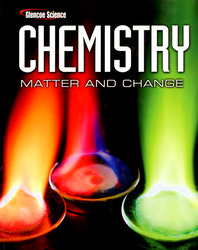1 <a onClick="window.open('/olcweb/cgi/pluginpop.cgi?it=jpg::::/sites/dl/free/007874637x/514826/fig22_2.jpg','popWin', 'width=NaN,height=NaN,resizable,scrollbars');" href="#"><img valign="absmiddle" height="16" width="16" border="0" src="/olcweb/styles/shared/linkicons/image.gif"> (46.0K)</a> A) chloromethane 50.488, methane 16.043 B) chloromethane 35.453, methane 1.008 C) chloromethane 35.453, methane 16.043 D) chloromethane 50.488, methane 12.011 2 A) Chloroethane is denser and has a lower boiling point B) Chloroethane is denser and has a higher boiling point C) Chloroethane is less dense and has a lower boiling point. D) Chloroethane is less dense and has a higher boiling point. 3 6 H12 , what is the formula for cyclohexanol?<a onClick="window.open('/olcweb/cgi/pluginpop.cgi?it=jpg::::/sites/dl/free/007874637x/514826/fig22_8.jpg','popWin', 'width=NaN,height=NaN,resizable,scrollbars');" href="#"><img valign="absmiddle" height="16" width="16" border="0" src="/olcweb/styles/shared/linkicons/image.gif"> (3.0K)</a> A) C6 OH B) C6 H12 OH C) C6 H10 OH D) C6 H11 OH 4 <a onClick="window.open('/olcweb/cgi/pluginpop.cgi?it=jpg::::/sites/dl/free/007874637x/514826/tab22_5.jpg','popWin', 'width=NaN,height=NaN,resizable,scrollbars');" href="#"><img valign="absmiddle" height="16" width="16" border="0" src="/olcweb/styles/shared/linkicons/image.gif"> (30.0K)</a> A) are non-reactive B) cannot form hydrogen bonds C) have high boiling points D) are more soluble in water than alcohols 5 <a onClick="window.open('/olcweb/cgi/pluginpop.cgi?it=jpg::::/sites/dl/free/007874637x/514826/tab22_8.jpg','popWin', 'width=NaN,height=NaN,resizable,scrollbars');" href="#"><img valign="absmiddle" height="16" width="16" border="0" src="/olcweb/styles/shared/linkicons/image.gif"> (28.0K)</a> A) form hydrogen bonds with each other B) somewhat soluble in water C) solvent for waxes D) polar molecule 6 <a onClick="window.open('/olcweb/cgi/pluginpop.cgi?it=jpg::::/sites/dl/free/007874637x/514826/tab22_10.jpg','popWin', 'width=NaN,height=NaN,resizable,scrollbars');" href="#"><img valign="absmiddle" height="16" width="16" border="0" src="/olcweb/styles/shared/linkicons/image.gif"> (30.0K)</a> A) carbonyl; alkyl B) hydroxyl; ketone C) hydroxyl; alkyl D) carbonyl; ketone 7 <a onClick="window.open('/olcweb/cgi/pluginpop.cgi?it=jpg::::/sites/dl/free/007874637x/514826/tab22_12.jpg','popWin', 'width=NaN,height=NaN,resizable,scrollbars');" href="#"><img valign="absmiddle" height="16" width="16" border="0" src="/olcweb/styles/shared/linkicons/image.gif"> (35.0K)</a> A) double- or triple-bonded carbon atoms B) single-bonded carbon atoms C) a hydroxide group D) a halide group 8 A) 1 B) 2 C) 3 D) 4 9 <a onClick="window.open('/olcweb/cgi/pluginpop.cgi?it=jpg::::/sites/dl/free/007874637x/514826/fig22_19.jpg','popWin', 'width=NaN,height=NaN,resizable,scrollbars');" href="#"><img valign="absmiddle" height="16" width="16" border="0" src="/olcweb/styles/shared/linkicons/image.gif"> (14.0K)</a> A) addition polymerization B) addition reaction C) replacement reaction D) condensation polymerization 10 <a onClick="window.open('/olcweb/cgi/pluginpop.cgi?it=jpg::::/sites/dl/free/007874637x/514826/fig22_16.jpg','popWin', 'width=NaN,height=NaN,resizable,scrollbars');" href="#"><img valign="absmiddle" height="16" width="16" border="0" src="/olcweb/styles/shared/linkicons/image.gif"> (9.0K)</a> A) It represents the number of structural units in the polymer chain. B) It represents the number of monomers that go into the formation of the polymer. C) It represents the molecular mass of the polymer. D) It represents the length of the molecule.





